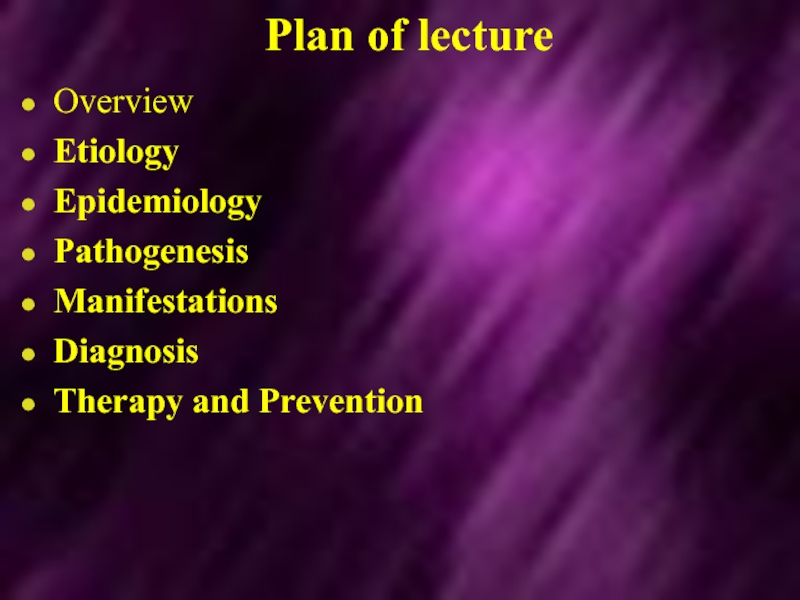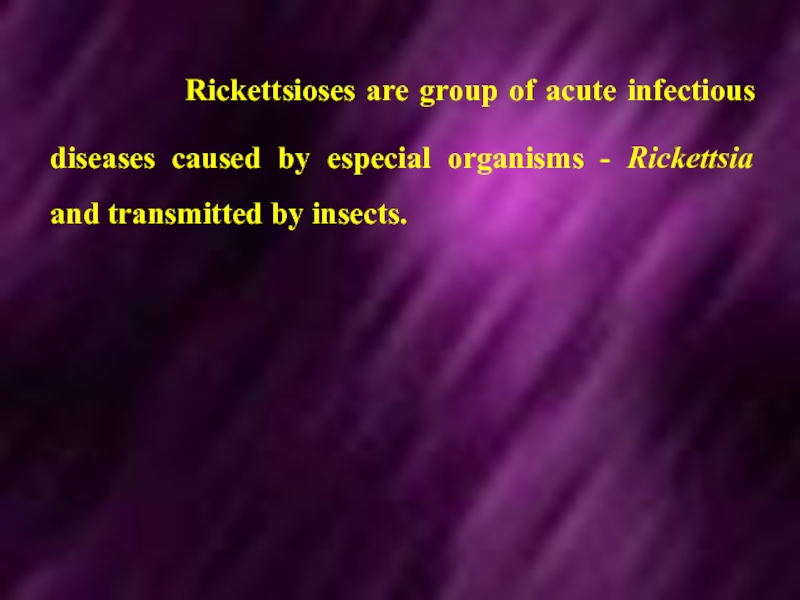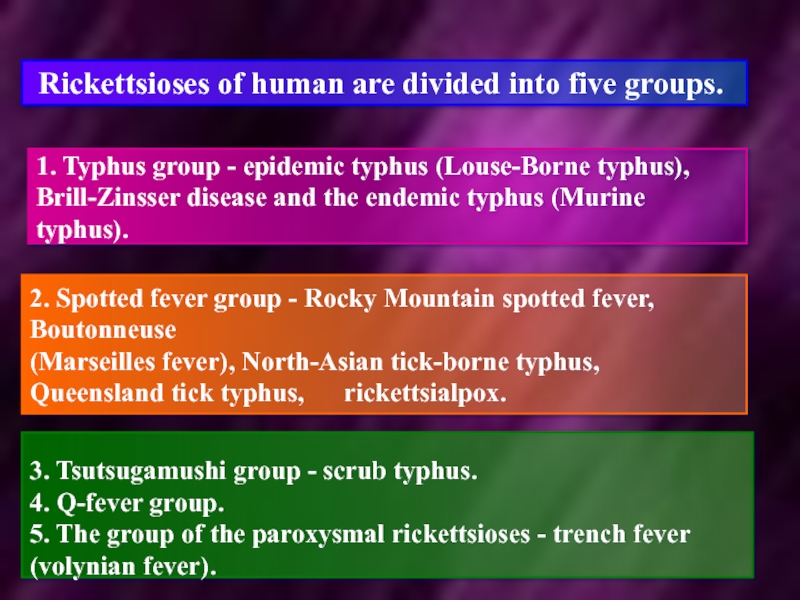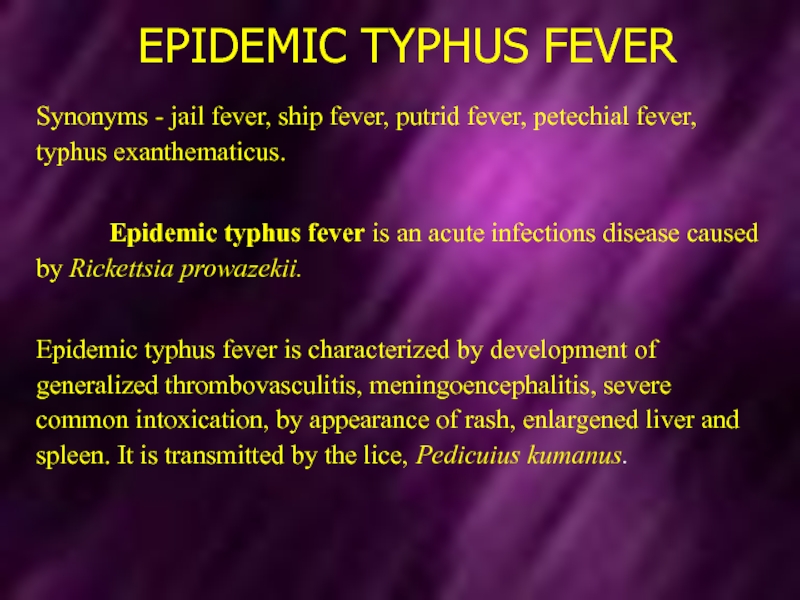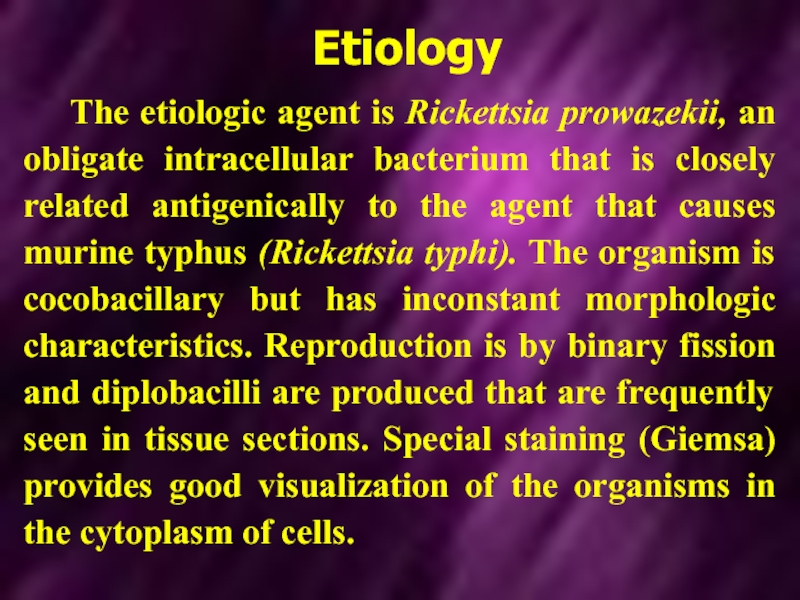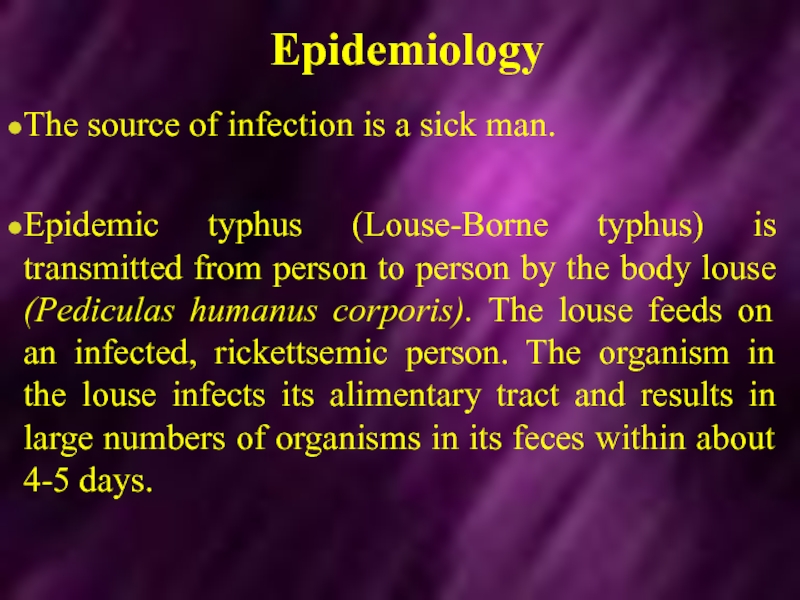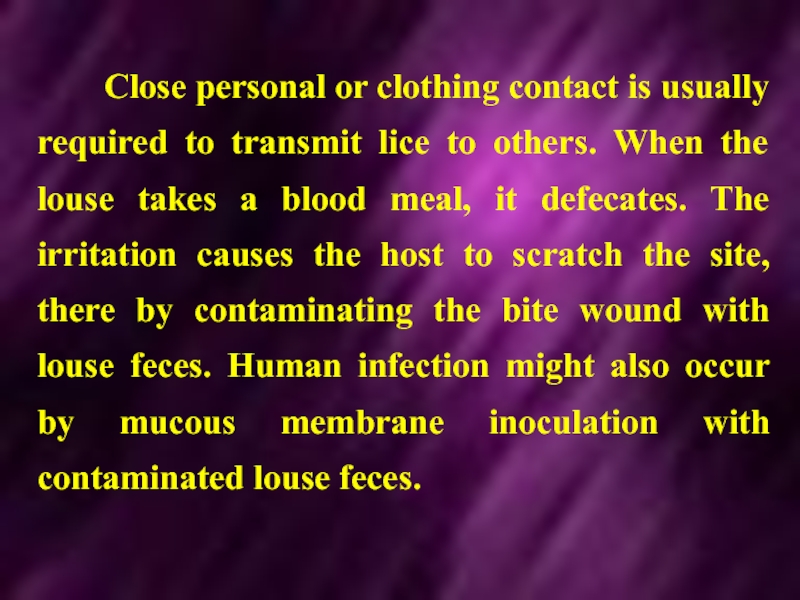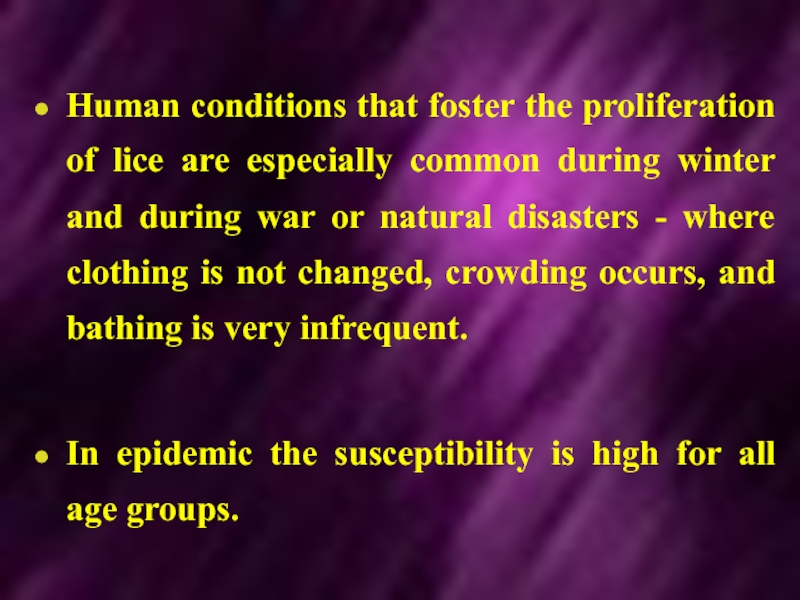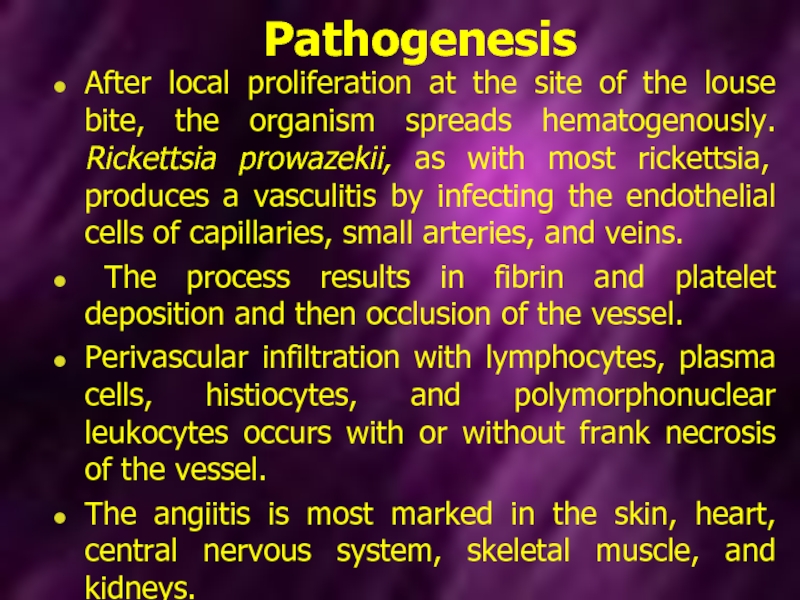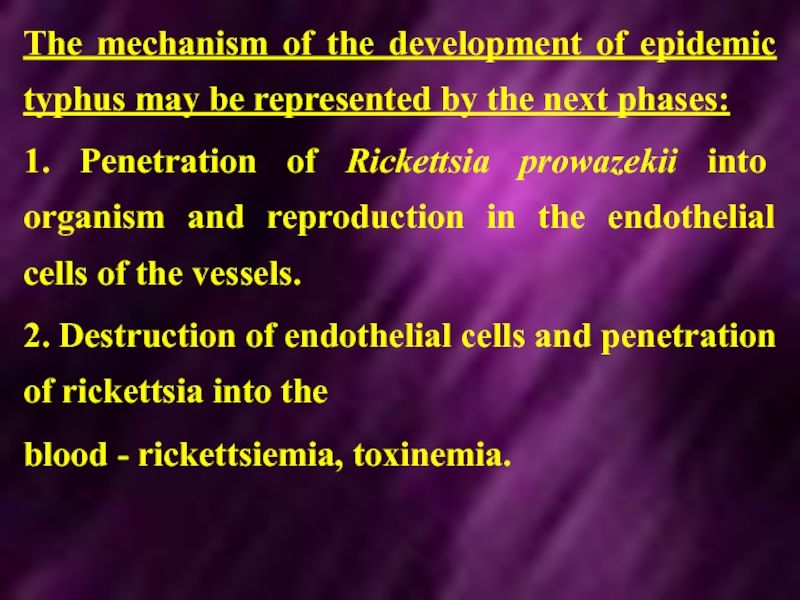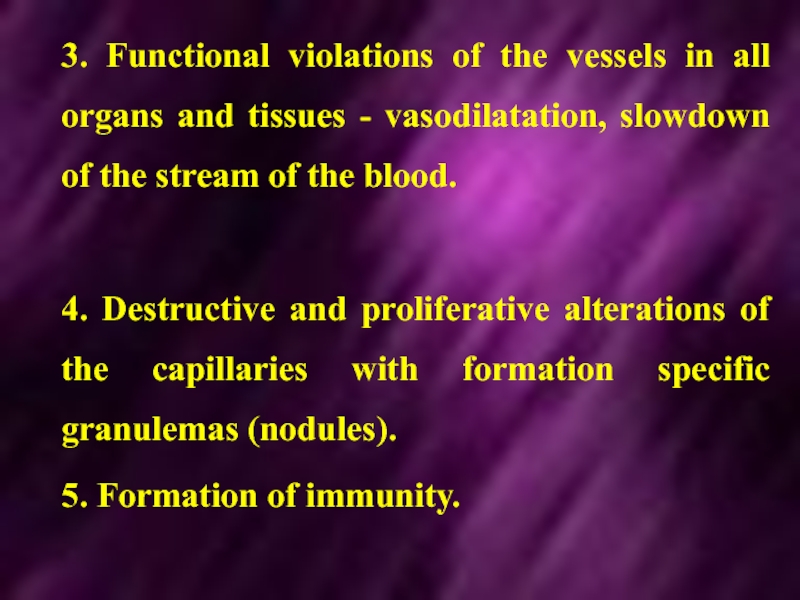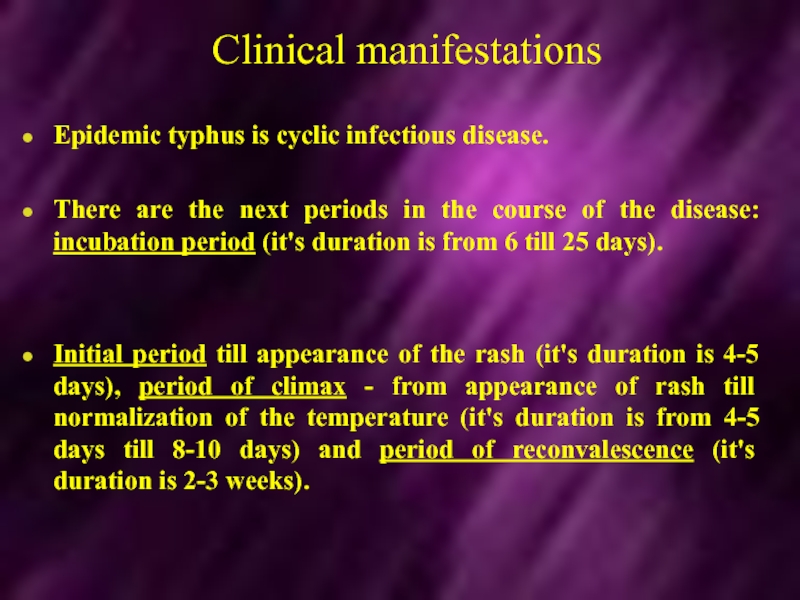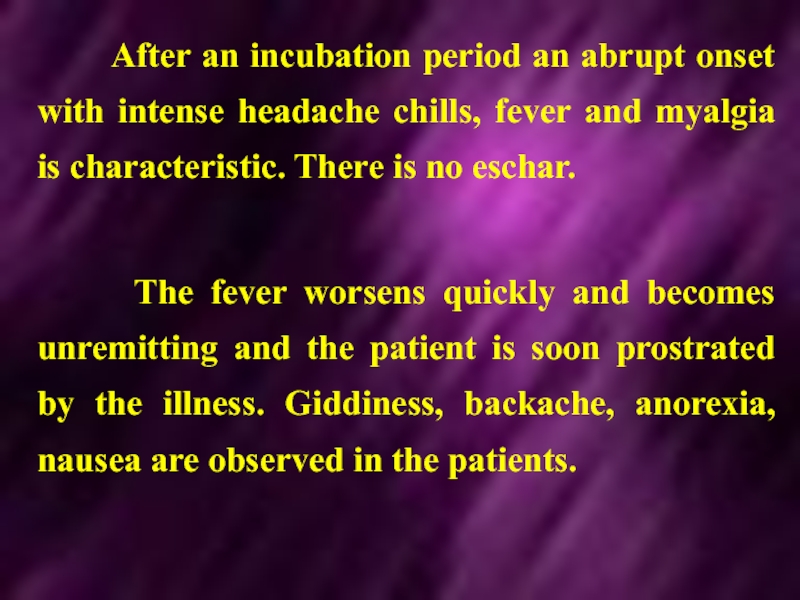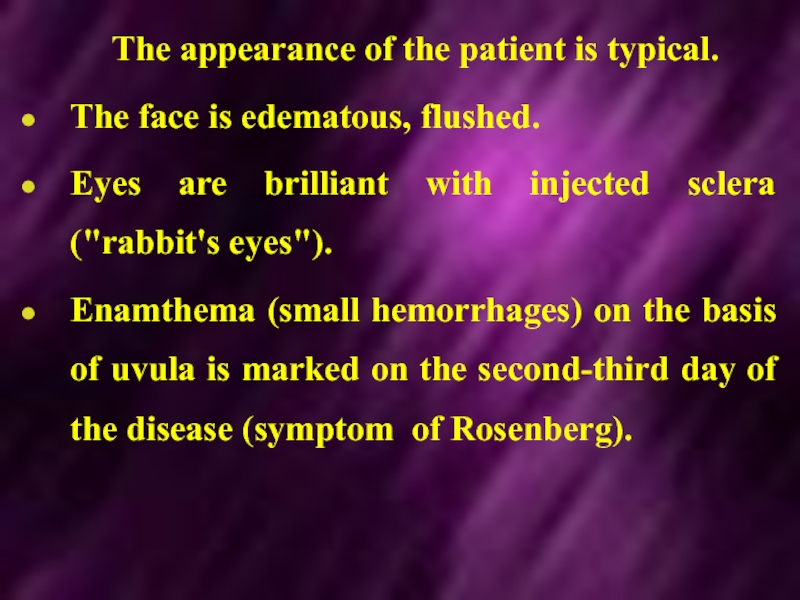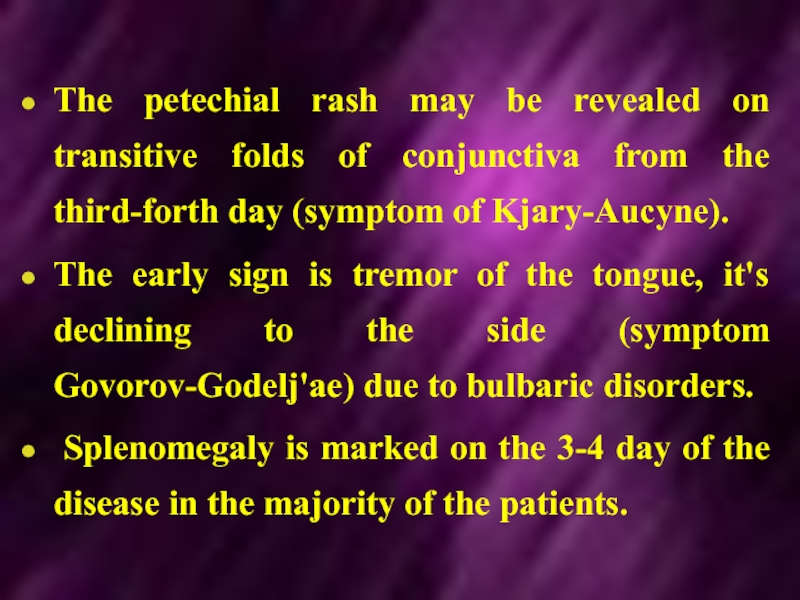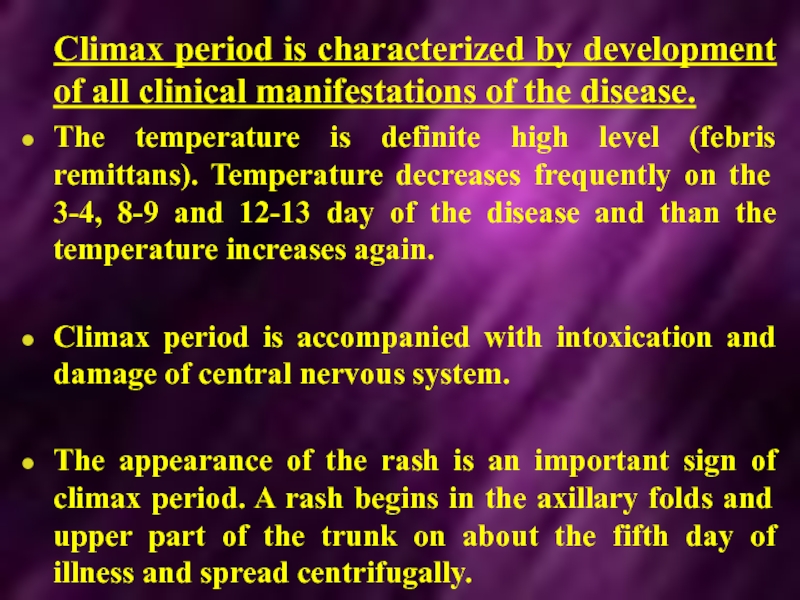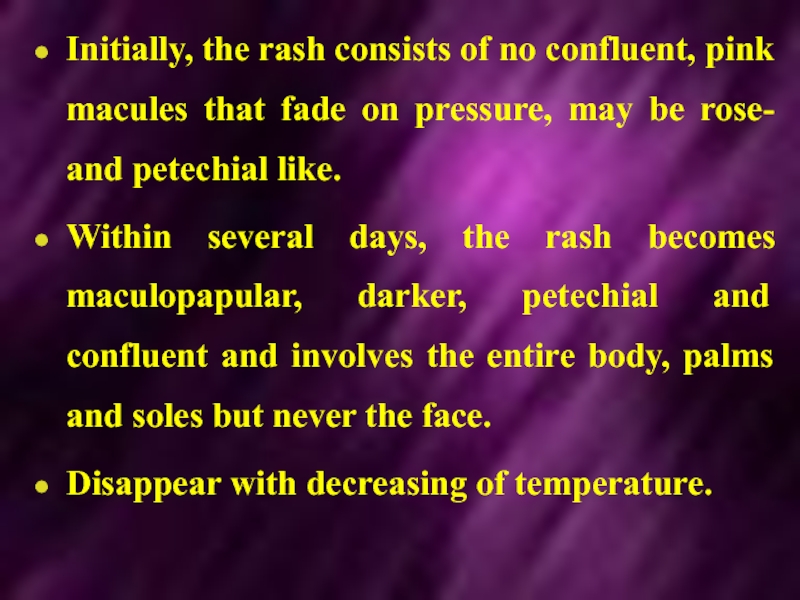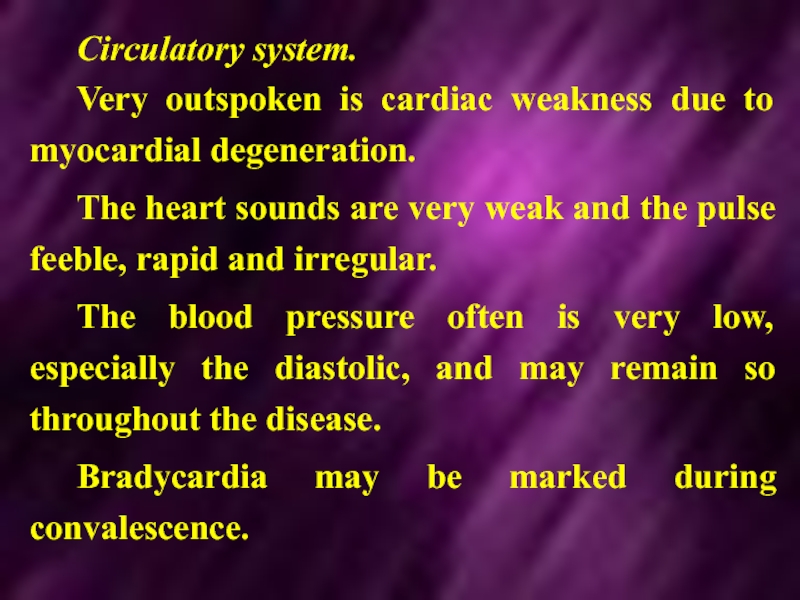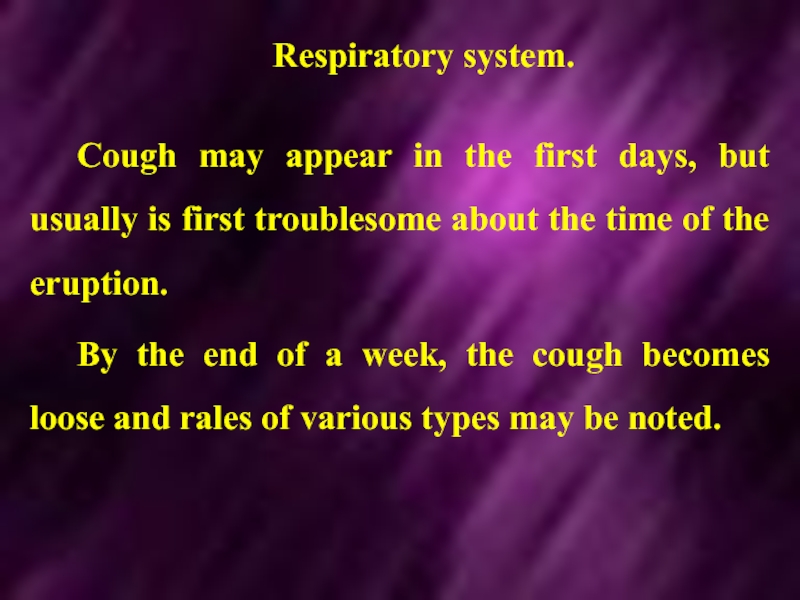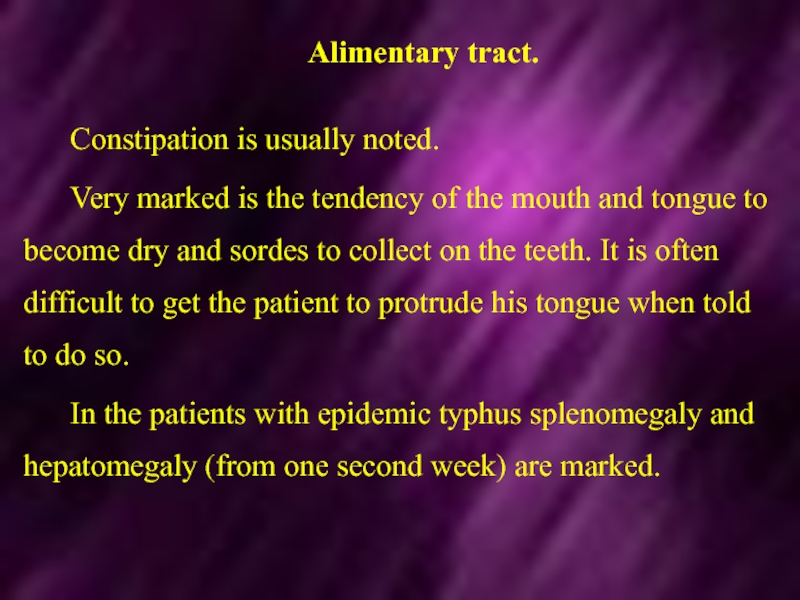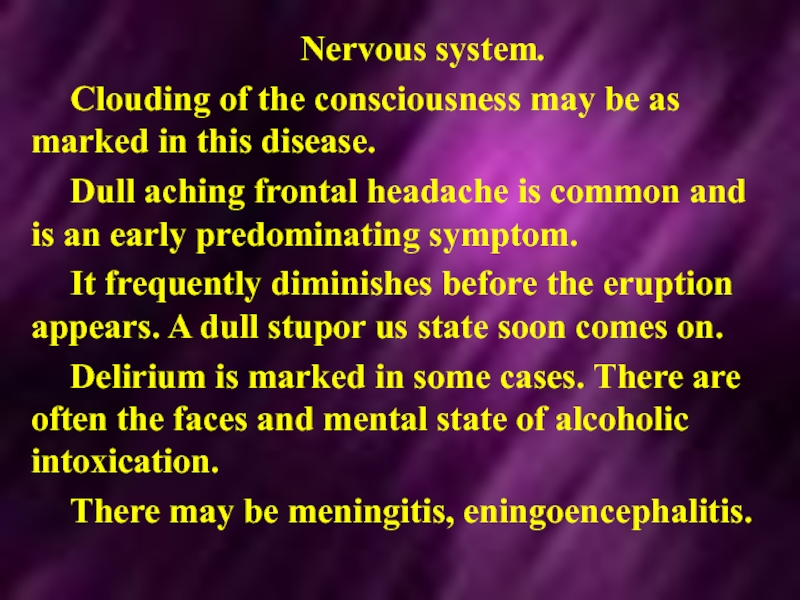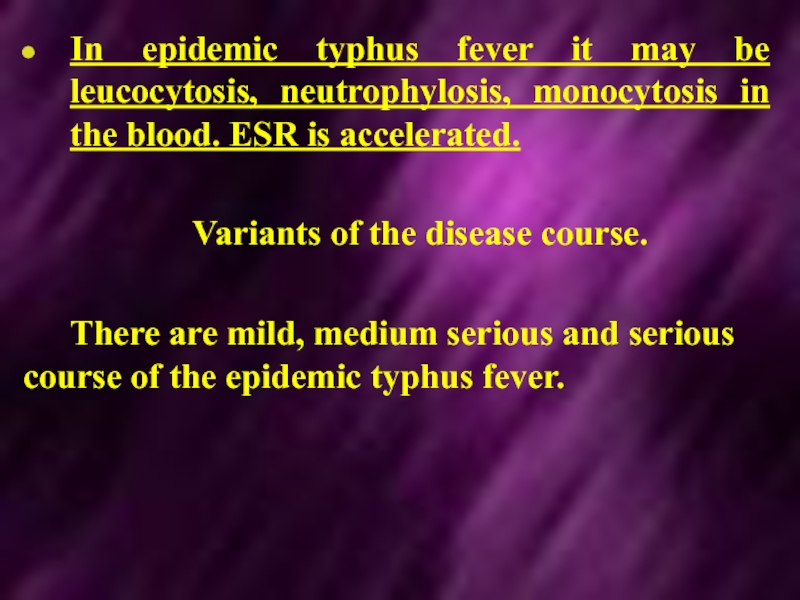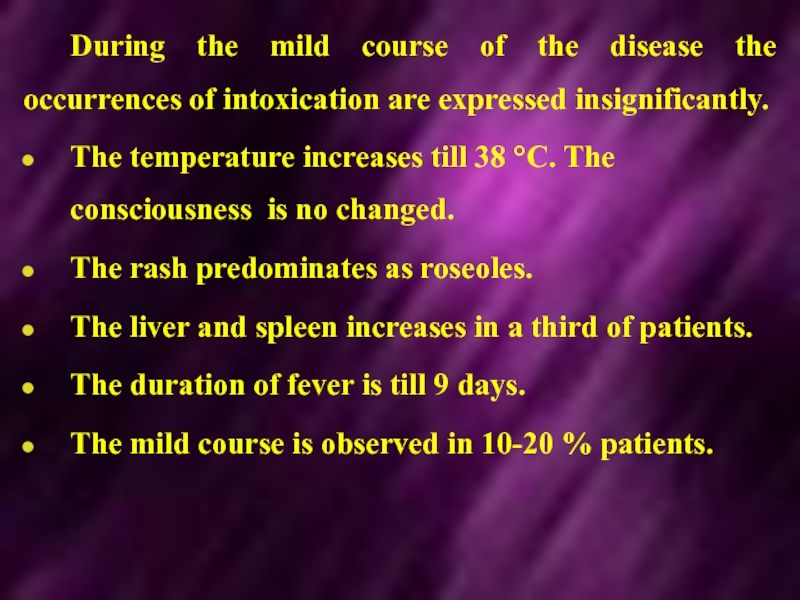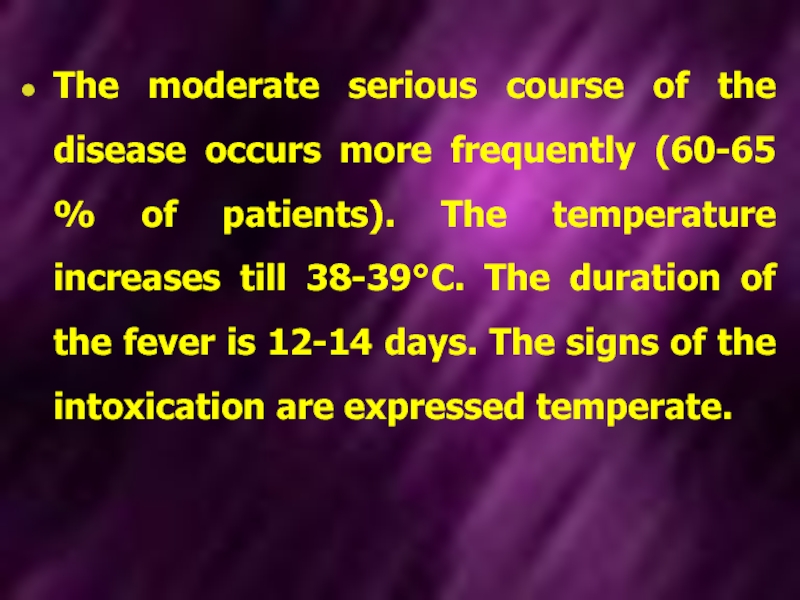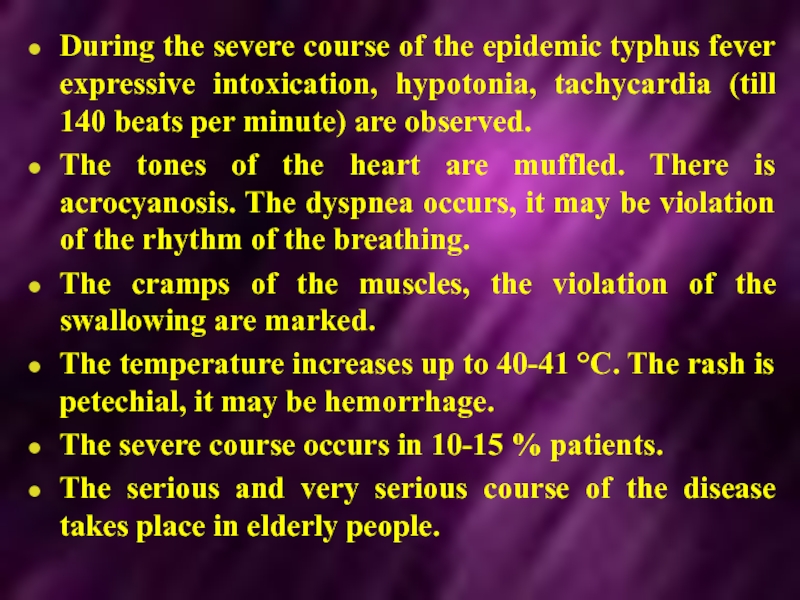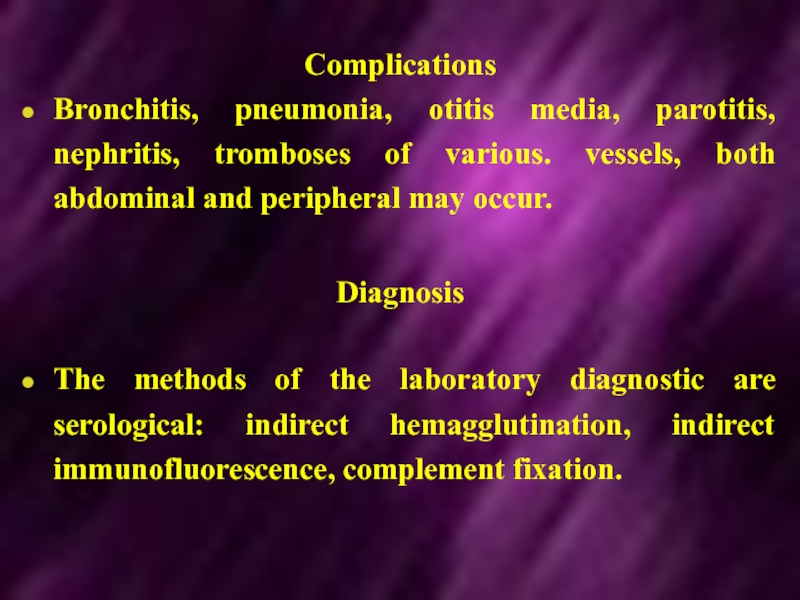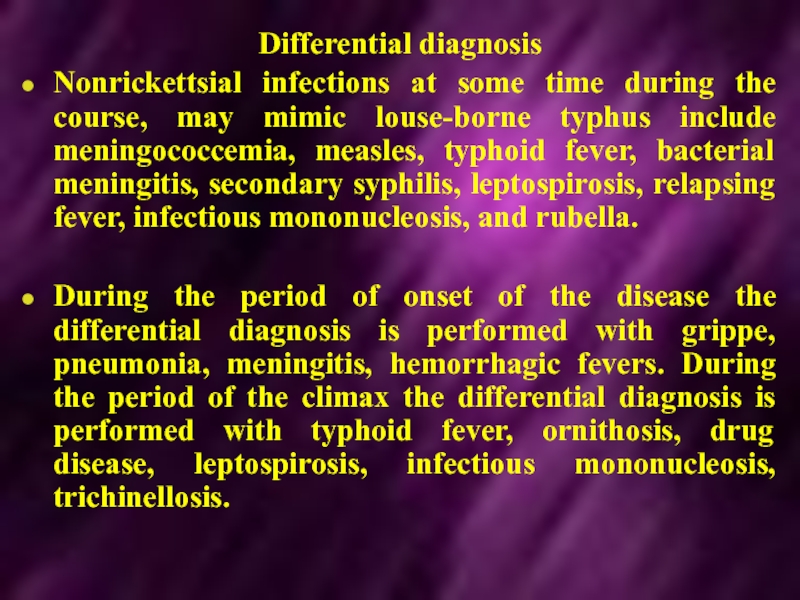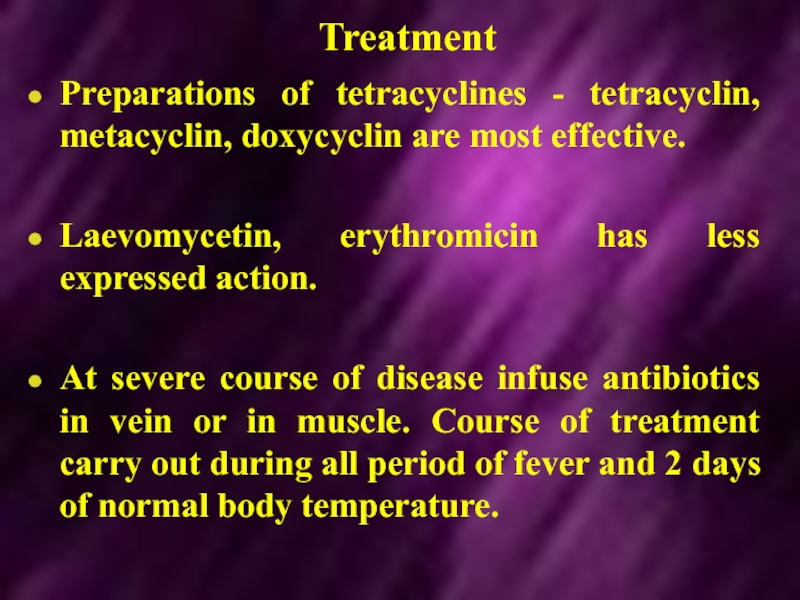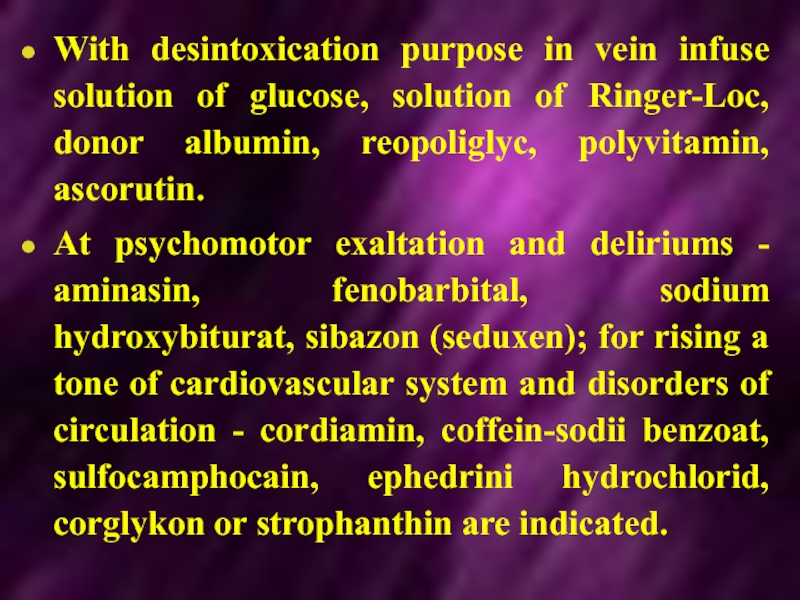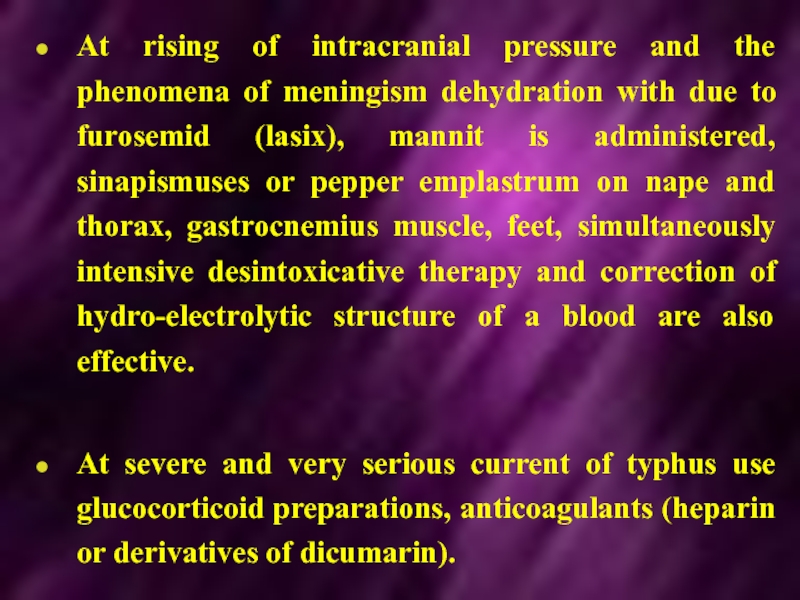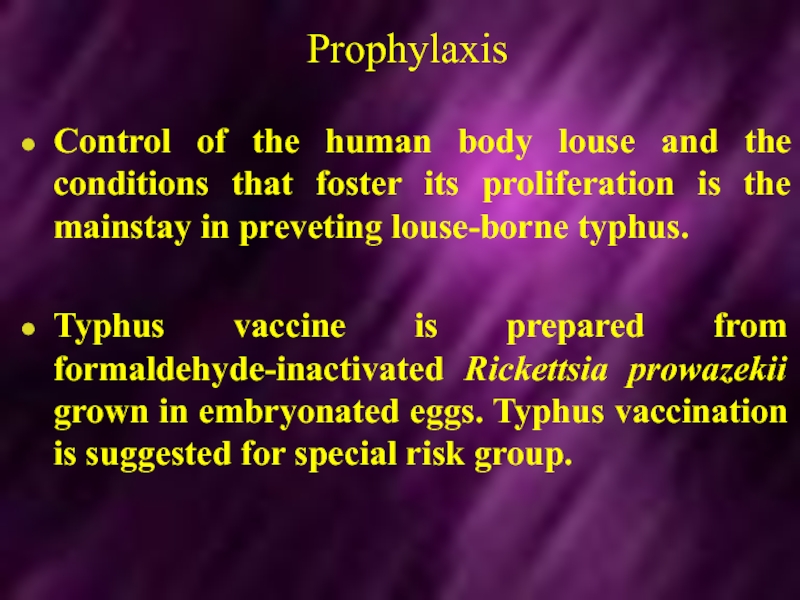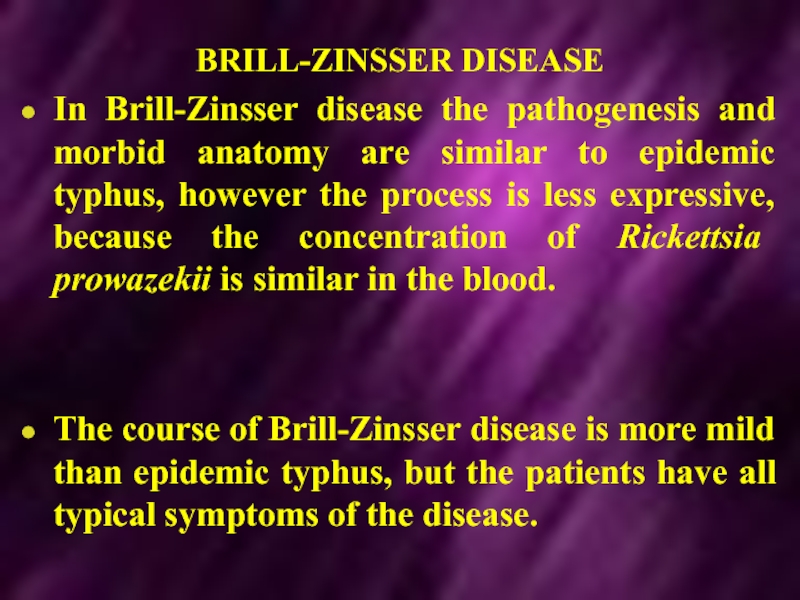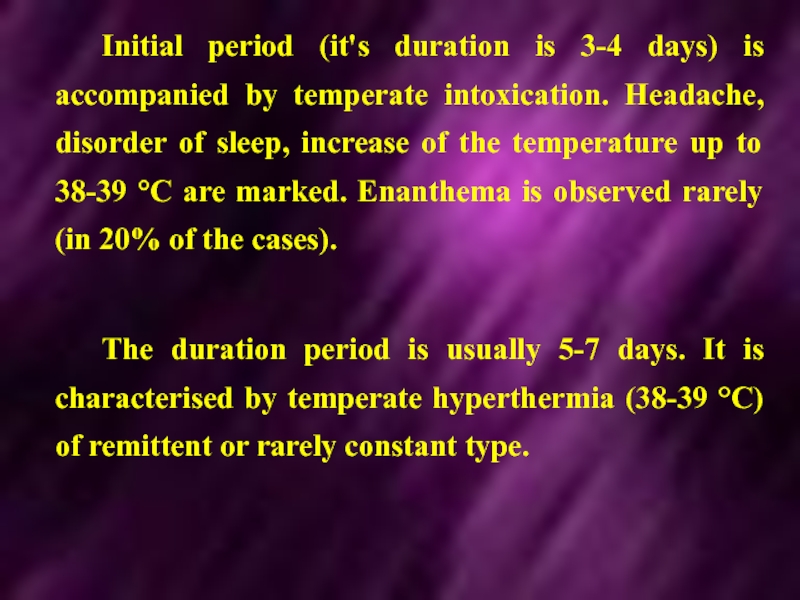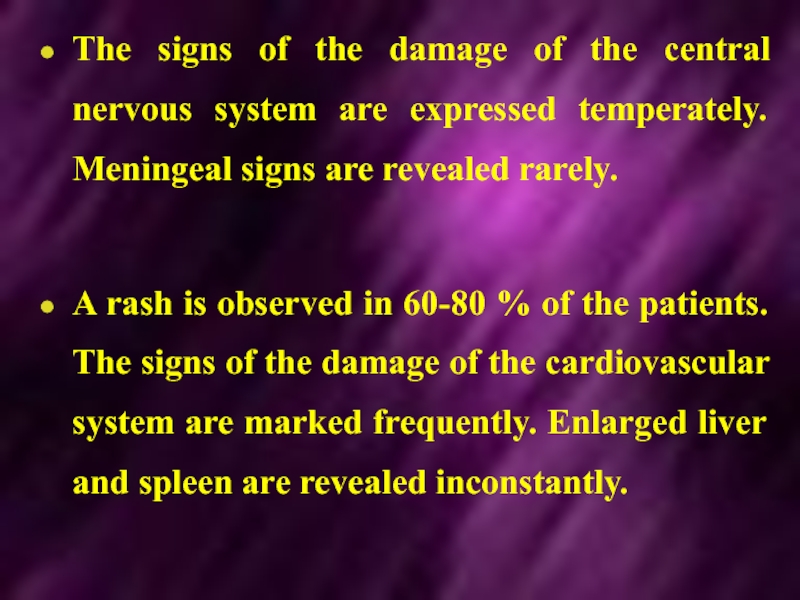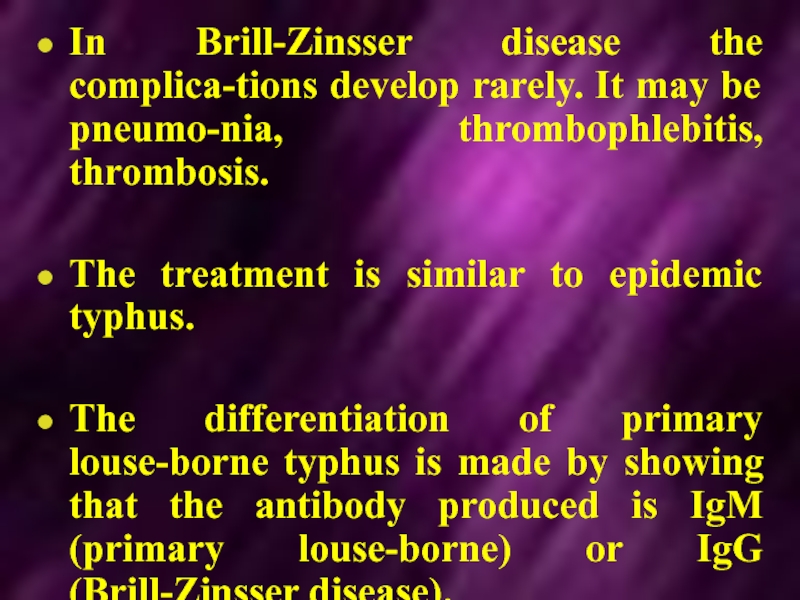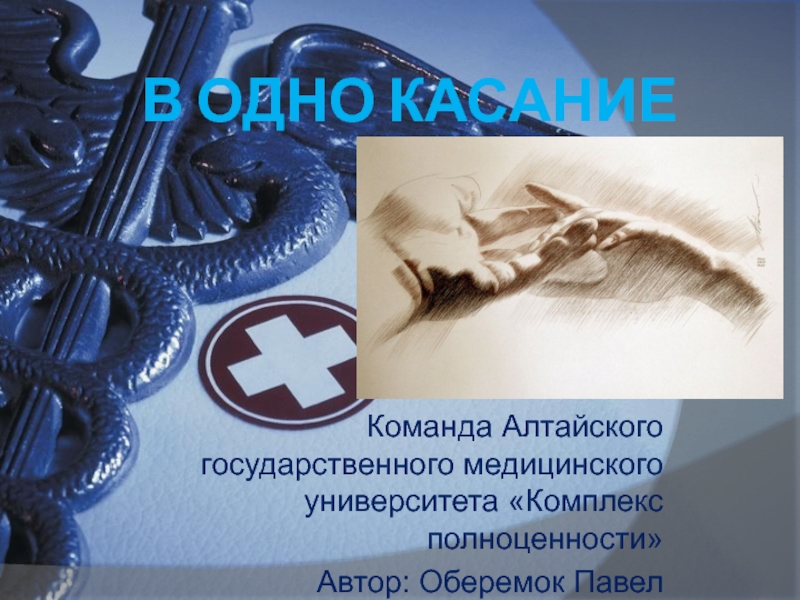- Главная
- Разное
- Дизайн
- Бизнес и предпринимательство
- Аналитика
- Образование
- Развлечения
- Красота и здоровье
- Финансы
- Государство
- Путешествия
- Спорт
- Недвижимость
- Армия
- Графика
- Культурология
- Еда и кулинария
- Лингвистика
- Английский язык
- Астрономия
- Алгебра
- Биология
- География
- Детские презентации
- Информатика
- История
- Литература
- Маркетинг
- Математика
- Медицина
- Менеджмент
- Музыка
- МХК
- Немецкий язык
- ОБЖ
- Обществознание
- Окружающий мир
- Педагогика
- Русский язык
- Технология
- Физика
- Философия
- Химия
- Шаблоны, картинки для презентаций
- Экология
- Экономика
- Юриспруденция
Rickettsiosis презентация
Содержание
- 1. Rickettsiosis
- 2. Plan of lecture Overview Etiology Epidemiology Pathogenesis Manifestations Diagnosis Therapy and Prevention
- 3. Rickettsioses are group
- 4. Rickettsioses of human are divided into
- 5. EPIDEMIC TYPHUS FEVER Synonyms - jail
- 6. Etiology The etiologic agent is Rickettsia prowazekii,
- 7. Epidemiology The source of infection is a
- 8. Close personal or
- 9. Human conditions that foster the proliferation
- 10. Pathogenesis After local proliferation at the site
- 11. The mechanism of the development of epidemic
- 12. 3. Functional violations of the vessels in
- 13. Clinical manifestations Epidemic typhus is cyclic
- 14. After an incubation period
- 15. The appearance of the patient
- 16. The petechial rash may be revealed on
- 17. Climax period is characterized by
- 18. Initially, the rash consists of no confluent,
- 19. Circulatory system. Very outspoken is cardiac
- 20. Respiratory system. Cough may appear
- 21. Alimentary tract. Constipation is usually
- 22. Nervous system. Clouding of the consciousness
- 23. In epidemic typhus fever it may be
- 24. During the mild course of the disease
- 25. The moderate serious course of the disease
- 26. During the severe course of the epidemic
- 27. Complications Bronchitis, pneumonia, otitis media, parotitis, nephritis,
- 28. Differential diagnosis Nonrickettsial infections at some time
- 29. Treatment Preparations of tetracyclines - tetracyclin, metacyclin,
- 30. With desintoxication purpose in vein infuse solution
- 31. At rising of intracranial pressure and the
- 32. Prophylaxis Control of the human
- 33. BRILL-ZINSSER DISEASE In Brill-Zinsser disease the pathogenesis
- 34. Initial period (it's duration is 3-4 days)
- 35. The signs of the damage of the
- 36. In Brill-Zinsser disease the complica-tions develop rarely.
Слайд 2Plan of lecture
Overview
Etiology
Epidemiology
Pathogenesis
Manifestations
Diagnosis
Therapy and Prevention
Слайд 3 Rickettsioses are group of acute infectious diseases
Слайд 4 Rickettsioses of human are divided into five groups.
2. Spotted fever
(Marseilles fever), North-Asian tick-borne typhus, Queensland tick typhus, rickettsialpox.
1. Typhus group - epidemic typhus (Louse-Borne typhus), Brill-Zinsser disease and the endemic typhus (Murine typhus).
3. Tsutsugamushi group - scrub typhus.
4. Q-fever group.
5. The group of the paroxysmal rickettsioses - trench fever (volynian fever).
Слайд 5EPIDEMIC TYPHUS FEVER
Synonyms - jail fever, ship fever, putrid fever, petechial
Epidemic typhus fever is an acute infections disease caused by Rickettsia prowazekii.
Epidemic typhus fever is characterized by development of generalized thrombovasculitis, meningoencephalitis, severe common intoxication, by appearance of rash, enlargened liver and spleen. It is transmitted by the lice, Pedicuius kumanus.
Слайд 6Etiology
The etiologic agent is Rickettsia prowazekii, an obligate intracellular bacterium that
Слайд 7Epidemiology
The source of infection is a sick man.
Epidemic typhus (Louse-Borne typhus)
Слайд 8 Close personal or clothing contact is usually
Слайд 9
Human conditions that foster the proliferation of lice are especially common
In epidemic the susceptibility is high for all age groups.
Слайд 10Pathogenesis
After local proliferation at the site of the louse bite, the
The process results in fibrin and platelet deposition and then occlusion of the vessel.
Perivascular infiltration with lymphocytes, plasma cells, histiocytes, and polymorphonuclear leukocytes occurs with or without frank necrosis of the vessel.
The angiitis is most marked in the skin, heart, central nervous system, skeletal muscle, and kidneys.
Слайд 11The mechanism of the development of epidemic typhus may be represented
1. Penetration of Rickettsia prowazekii into organism and reproduction in the endothelial cells of the vessels.
2. Destruction of endothelial cells and penetration of rickettsia into the
blood - rickettsiemia, toxinemia.
Слайд 123. Functional violations of the vessels in all organs and tissues
4. Destructive and proliferative alterations of the capillaries with formation specific granulemas (nodules).
5. Formation of immunity.
Слайд 13Clinical manifestations
Epidemic typhus is cyclic infectious disease.
There are the next
Initial period till appearance of the rash (it's duration is 4-5 days), period of climax - from appearance of rash till normalization of the temperature (it's duration is from 4-5 days till 8-10 days) and period of reconvalescence (it's duration is 2-3 weeks).
Слайд 14 After an incubation period an abrupt onset with
The fever worsens quickly and becomes unremitting and the patient is soon prostrated by the illness. Giddiness, backache, anorexia, nausea are observed in the patients.
Слайд 15 The appearance of the patient is typical.
The face
Eyes are brilliant with injected sclera ("rabbit's eyes").
Enamthema (small hemorrhages) on the basis of uvula is marked on the second-third day of the disease (symptom of Rosenberg).
Слайд 16The petechial rash may be revealed on transitive folds of conjunctiva
The early sign is tremor of the tongue, it's declining to the side (symptom Govorov-Godelj'ae) due to bulbaric disorders.
Splenomegaly is marked on the 3-4 day of the disease in the majority of the patients.
Слайд 17 Climax period is characterized by development of all clinical
The temperature is definite high level (febris remittans). Temperature decreases frequently on the 3-4, 8-9 and 12-13 day of the disease and than the temperature increases again.
Climax period is accompanied with intoxication and damage of central nervous system.
The appearance of the rash is an important sign of climax period. A rash begins in the axillary folds and upper part of the trunk on about the fifth day of illness and spread centrifugally.
Слайд 18Initially, the rash consists of no confluent, pink macules that fade
Within several days, the rash becomes maculopapular, darker, petechial and confluent and involves the entire body, palms and soles but never the face.
Disappear with decreasing of temperature.
Слайд 19Circulatory system.
Very outspoken is cardiac weakness due to myocardial degeneration.
The heart sounds are very weak and the pulse feeble, rapid and irregular.
The blood pressure often is very low, especially the diastolic, and may remain so throughout the disease.
Bradycardia may be marked during convalescence.
Слайд 20Respiratory system.
Cough may appear in the first days, but usually
By the end of a week, the cough becomes loose and rales of various types may be noted.
Слайд 21Alimentary tract.
Constipation is usually noted.
Very marked is the tendency of
In the patients with epidemic typhus splenomegaly and hepatomegaly (from one second week) are marked.
Слайд 22Nervous system.
Clouding of the consciousness may be as marked in
Dull aching frontal headache is common and is an early predominating symptom.
It frequently diminishes before the eruption appears. A dull stupor us state soon comes on.
Delirium is marked in some cases. There are often the faces and mental state of alcoholic intoxication.
There may be meningitis, eningoencephalitis.
Слайд 23In epidemic typhus fever it may be leucocytosis, neutrophylosis, monocytosis in
Variants of the disease course.
There are mild, medium serious and serious course of the epidemic typhus fever.
Слайд 24During the mild course of the disease the occurrences of intoxication
The temperature increases till 38 °C. The consciousness is no changed.
The rash predominates as roseoles.
The liver and spleen increases in a third of patients.
The duration of fever is till 9 days.
The mild course is observed in 10-20 % patients.
Слайд 25The moderate serious course of the disease occurs more frequently (60-65
Слайд 26During the severe course of the epidemic typhus fever expressive intoxication,
The tones of the heart are muffled. There is acrocyanosis. The dyspnea occurs, it may be violation of the rhythm of the breathing.
The cramps of the muscles, the violation of the swallowing are marked.
The temperature increases up to 40-41 °C. The rash is petechial, it may be hemorrhage.
The severe course occurs in 10-15 % patients.
The serious and very serious course of the disease takes place in elderly people.
Слайд 27Complications
Bronchitis, pneumonia, otitis media, parotitis, nephritis, tromboses of various. vessels, both
Diagnosis
The methods of the laboratory diagnostic are serological: indirect hemagglutination, indirect immunofluorescence, complement fixation.
Слайд 28Differential diagnosis
Nonrickettsial infections at some time during the course, may mimic
During the period of onset of the disease the differential diagnosis is performed with grippe, pneumonia, meningitis, hemorrhagic fevers. During the period of the climax the differential diagnosis is performed with typhoid fever, ornithosis, drug disease, leptospirosis, infectious mononucleosis, trichinellosis.
Слайд 29Treatment
Preparations of tetracyclines - tetracyclin, metacyclin, doxycyclin are most effective.
Laevomycetin, erythromicin
At severe course of disease infuse antibiotics in vein or in muscle. Course of treatment carry out during all period of fever and 2 days of normal body temperature.
Слайд 30With desintoxication purpose in vein infuse solution of glucose, solution of
At psychomotor exaltation and deliriums - aminasin, fenobarbital, sodium hydroxybiturat, sibazon (seduxen); for rising a tone of cardiovascular system and disorders of circulation - cordiamin, coffein-sodii benzoat, sulfocamphocain, ephedrini hydrochlorid, corglykon or strophanthin are indicated.
Слайд 31At rising of intracranial pressure and the phenomena of meningism dehydration
At severe and very serious current of typhus use glucocorticoid preparations, anticoagulants (heparin or derivatives of dicumarin).
Слайд 32
Prophylaxis
Control of the human body louse and the conditions that foster
Typhus vaccine is prepared from formaldehyde-inactivated Rickettsia prowazekii grown in embryonated eggs. Typhus vaccination is suggested for special risk group.
Слайд 33BRILL-ZINSSER DISEASE
In Brill-Zinsser disease the pathogenesis and morbid anatomy are similar
The course of Brill-Zinsser disease is more mild than epidemic typhus, but the patients have all typical symptoms of the disease.
Слайд 34Initial period (it's duration is 3-4 days) is accompanied by temperate
The duration period is usually 5-7 days. It is characterised by temperate hyperthermia (38-39 °C) of remittent or rarely constant type.
Слайд 35The signs of the damage of the central nervous system are
A rash is observed in 60-80 % of the patients. The signs of the damage of the cardiovascular system are marked frequently. Enlarged liver and spleen are revealed inconstantly.
Слайд 36In Brill-Zinsser disease the complica-tions develop rarely. It may be pneumo-nia,
The treatment is similar to epidemic typhus.
The differentiation of primary louse-borne typhus is made by showing that the antibody produced is IgM (primary louse-borne) or IgG (Brill-Zinsser disease).

